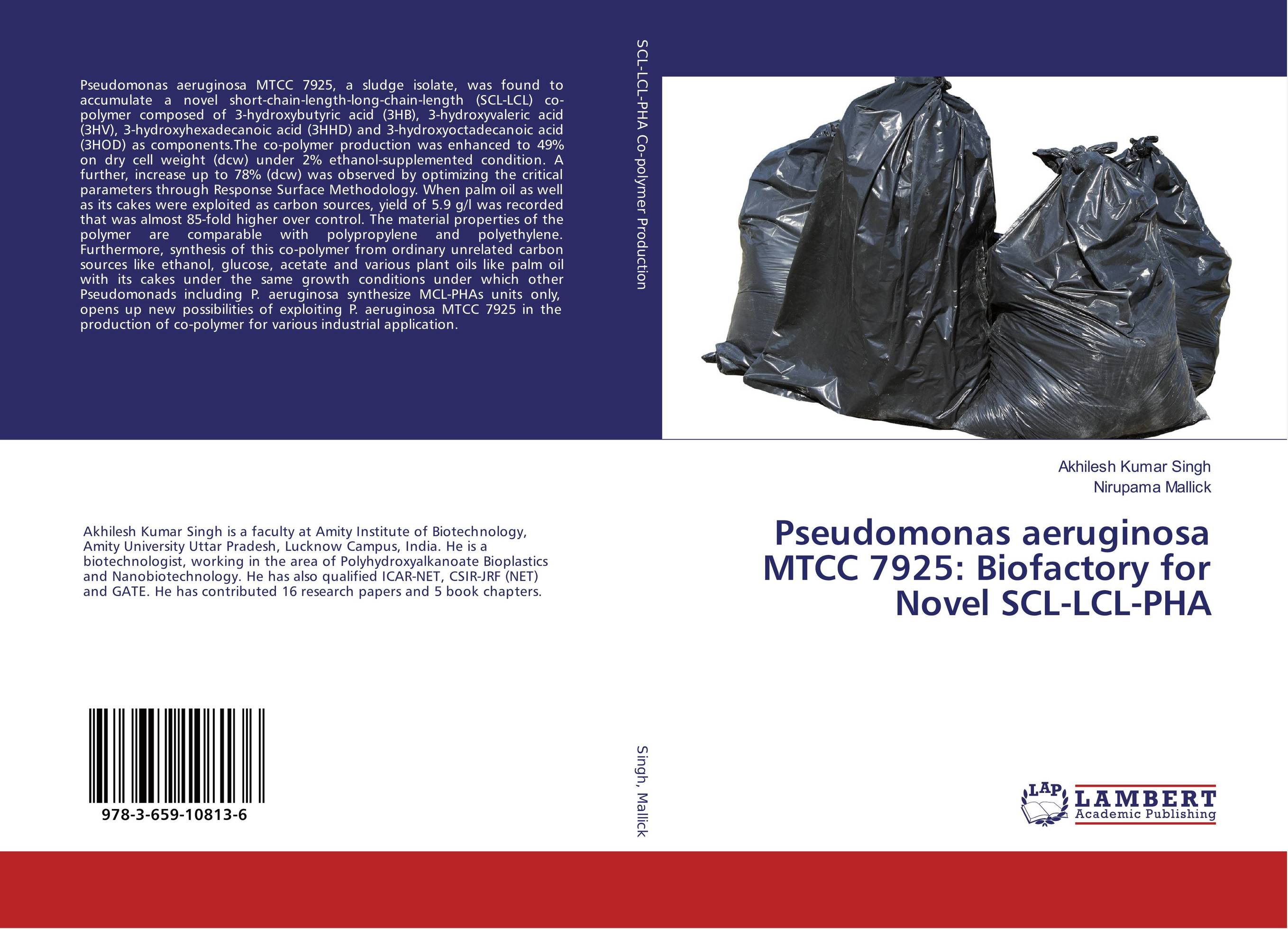| Поиск по каталогу |
|
(строгое соответствие)
|
- Профессиональная
- Научно-популярная
- Художественная
- Публицистика
- Детская
- Искусство
- Хобби, семья, дом
- Спорт
- Путеводители
- Блокноты, тетради, открытки
Pseudomonas aeruginosa MTCC 7925: Biofactory for Novel SCL-LCL-PHA.

В наличии
| Местонахождение: Алматы | Состояние экземпляра: новый |

Бумажная
версия
версия
Автор: Akhilesh Kumar Singh and Nirupama Mallick
ISBN: 9783659108136
Год издания: 2017
Формат книги: 60×90/16 (145×215 мм)
Количество страниц: 148
Издательство: LAP LAMBERT Academic Publishing
Цена: 36562 тг
Положить в корзину
Позиции в рубрикаторе
Отрасли знаний:Код товара: 115460
| Способы доставки в город Алматы * комплектация (срок до отгрузки) не более 2 рабочих дней |
| Самовывоз из города Алматы (пункты самовывоза партнёра CDEK) |
| Курьерская доставка CDEK из города Москва |
| Доставка Почтой России из города Москва |
Аннотация: Pseudomonas aeruginosa MTCC 7925, a sludge isolate, was found to accumulate a novel short-chain-length-long-chain-length (SCL-LCL) co-polymer composed of 3-hydroxybutyric acid (3HB), 3-hydroxyvaleric acid (3HV), 3-hydroxyhexadecanoic acid (3HHD) and 3-hydroxyoctadecanoic acid (3HOD) as components.The co-polymer production was enhanced to 49% on dry cell weight (dcw) under 2% ethanol-supplemented condition. A further, increase up to 78% (dcw) was observed by optimizing the critical parameters through Response Surface Methodology. When palm oil as well as its cakes were exploited as carbon sources, yield of 5.9 g/l was recorded that was almost 85-fold higher over control. The material properties of the polymer are comparable with polypropylene and polyethylene. Furthermore, synthesis of this co-polymer from ordinary unrelated carbon sources like ethanol, glucose, acetate and various plant oils like palm oil with its cakes under the same growth conditions under which other Pseudomonads including P. aeruginosa synthesize MCL-PHAs units only, opens up new possibilities of exploiting P. aeruginosa MTCC 7925 in the production of co-polymer for various industrial application.
Ключевые слова: Response Surface Methodology (RSM), Central composite rotary design (CCRD), Inexpensive substrates, N-deficiency, P-deficiency, Polyhydroxyalkanoates (PHAs), Pseudomonas aeruginosa MTCC 7925, SCL-LCL-PHA co-polymer, Unrelated carbon sources



